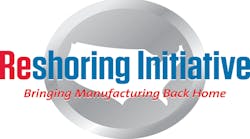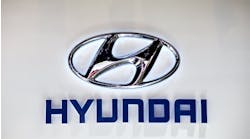Recently, rising energy prices, wage inflation and customer demand for shorter lead times have led many U.S. companies to consider “reshoring” the production of goods bound for domestic markets back to America.
As with all changes to a company’s footprint, getting it right can be tricky. A decision to reshore should not be made absent the following considerations:
Focus on total costs instead of unit costs: Calculate indirect as well as direct expenses when evaluating offshore vs. onshore locations. Experts believe that by focusing on unit costs instead of the total cost of ownership - which includes costs such as transportation, intellectual property risks and inventory carrying costs - manufacturers are overestimating potential savings from overseas operations by 20% to 30%. The Reshoring Initiative offers an online tool that aggregates 29 cost factors to more accurately determine total costs for reshoring projects.
Invest time to understand domestic labor markets: Supply, quality, and cost of labor are critical to the success of most (if not all) reshoring projects. Plant closures and an aging workforce have depleted the pool of skilled manufacturing workers in some parts of the country.
This shortage is further compounded by pressures to pursue a four-year college degree when a two-year technical degree may actually be more lucrative. Communities offering comprehensive, high quality technical training programs properly aligned with the needs of local employers are better equipped to deliver a pipeline of well-trained and highly-skilled workers.
Pursue government incentives to offset costs: Consistent with their long-standing support for projects that positively impact the overall economy, local, state, and federal governments have actively supported the resurgence of American manufacturing.
The U.S. Economic Development Administration’s Make it in America Challenge is a $40 million initiative providing grants to support reshoring projects.
Many cities and states also offer financial and operating incentives (such as no- or low-cost pre-employment training) to attract and support manufacturing operations.
However, to realize maximum value, it is important to understand which programs are beneficial to your company’s specific needs. Of course, incentives are only part of the equation and should never be allowed to drive a project to a location that doesn’t meet the company’s operating requirements.
Analyze transportation cost differentials: In- and out-bound transportation costs, including the delivery of raw materials and the shipment of finished product, can comprise a major share of the cost of goods sold in the U.S., and can vary widely depending on the location. Given shortages of truck drivers and equipment, as well as trends towards sustainability, it may also be prudent to investigate alternative modes of transportation, such as rail.
Carefully assess product demand: Spurred by efforts such as Walmart’s $250 billion “Buy American” campaign, locally produced goods are in high demand. However, miscalculations can lead to lost investment and time. In 2010, Stanley Furniture announced it would relocate production of baby cribs from China to Robbinsville, N.C. The new cribs were marketed under the Young America brand, a new line of high quality youth furniture. After investing $10 million in new state-of-the-art equipment, sales failed to meet expectations and the company is closing the facility.
Diligently review utility services and rates: Reliable, cost-competitive electric power is critical for many manufacturing operations. Power prices can vary from (occasionally) below 4¢ to above 12¢ per kWh; a delta of millions of dollars annually for large users. For operations such as food processing, water quality and availability and wastewater treatment capacity are also key. Again, rates and available capacities will vary greatly between locations and even among sites in the same location.
Consider tax climates: State and local tax rates and structures vary greatly across the country. Carefully assess the potential impact of corporate income taxes and taxes on the purchase of production equipment, real estate, machinery, and inventory. It is critical to consider company accounting structures and strategies to find the optimal arrangement for the specific operation.
In short, deciding whether and/or where to reshore a manufacturing operation in the U.S. is a complex decision involving a multitude of considerations. Companies can minimize risks and reap rewards by carefully analyzing these factors.
Biggins Lacy Shapiro & Company, is a location economics consulting firm.




